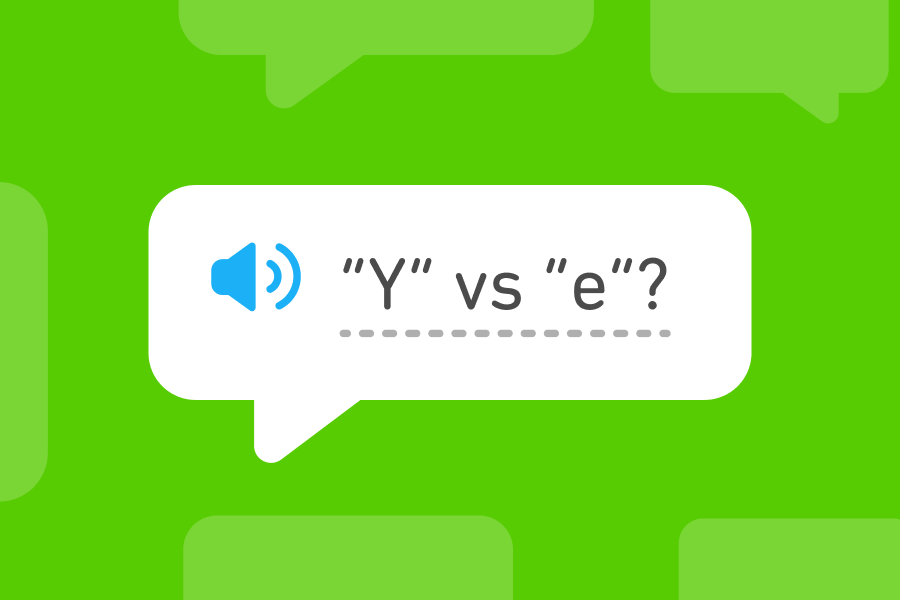As Spanish learners know, the word for “and” is y. You’ll see y almost as soon as you start studying Spanish, in phrases like café y pan (coffee and bread), tú y yo (you and I), and El búho es grande y me da miedo (The owl is large and it scares me).
But as you learn more Spanish, you’ll find another way to say “and”: e. ¿¿Y *y* e?? What’s going on here?
When do you use y in Spanish?
In nearly all cases, y is the way you'll say “and” in Spanish. Think of it as the default!
When do you use e in Spanish?
There is one exception when it comes to “and”: If the next word also starts with an “ee” sound, use e instead.
So for example, if you want to say that the book is fun and interesting, you’ll use the word interesante (interesting). Since the “i” of interesante is the same sound as the word y, you’ll use e before it:
- El libro es divertido e interesante.(The book is funny and interesting.)
- El libro es interesante y divertido.(The book is interesting and funny.)
That’s the whole rule! Just the one exception, before words that also start with the “ee” sound. That’ll include words that start with the letter “i” (like interesante), words that start with “hi” (like hijo “son”) because the “h” is silent in Spanish, and occasionally some words that have “y” as a vowel at the beginning (like the name Ysabel).
Why does Spanish have two words for “and”?
All languages have rules about what sounds can go next to each other in words and sentences. In English, we have the rule that we don’t put “a” in front of words that start with a vowel. That’s why we say a banana but an apple. There’s not an especially good reason why, besides breaking up two vowels in a row… it’s just how the language works!
The same is true for Spanish y and e: In Spanish, you just don’t say y before words that start with the “ee” sound! Instead, use e.
There’s a similar rule about the words for “or” in Spanish: o is the default word, but when it comes before a word that starts with the same sound (like otros “others”), you use u instead. So you say otros edificios o casas (other buildings or houses), but casas u otros edificios (houses or other buildings).
And… that’s all there is to it!
The rule for remembering when to use y and e (and o and u) in Spanish is easy, but some patterns are trickier to learn. Keep practicing this and other pronunciation rules, and over time these small differences will start to feel natural!
